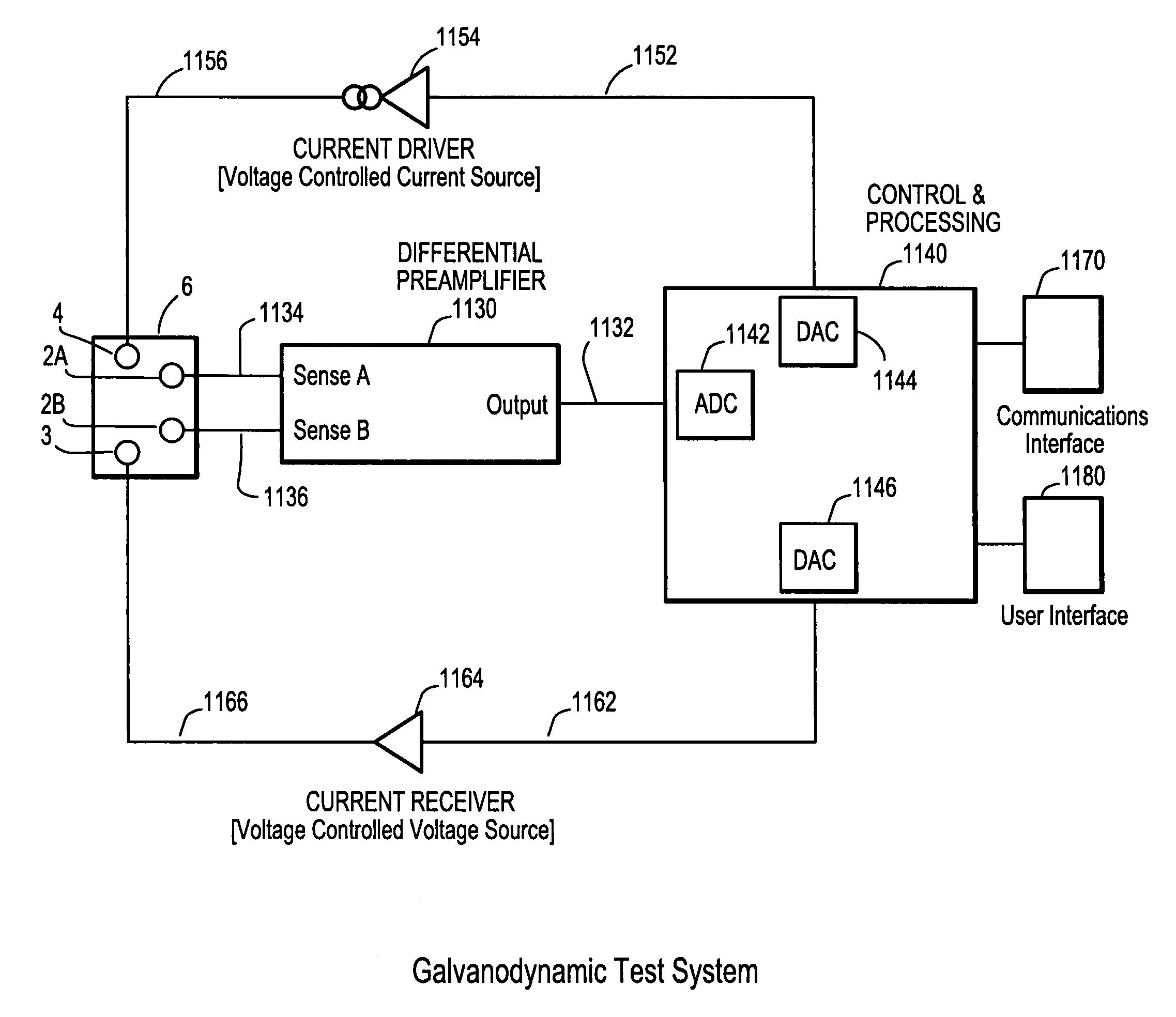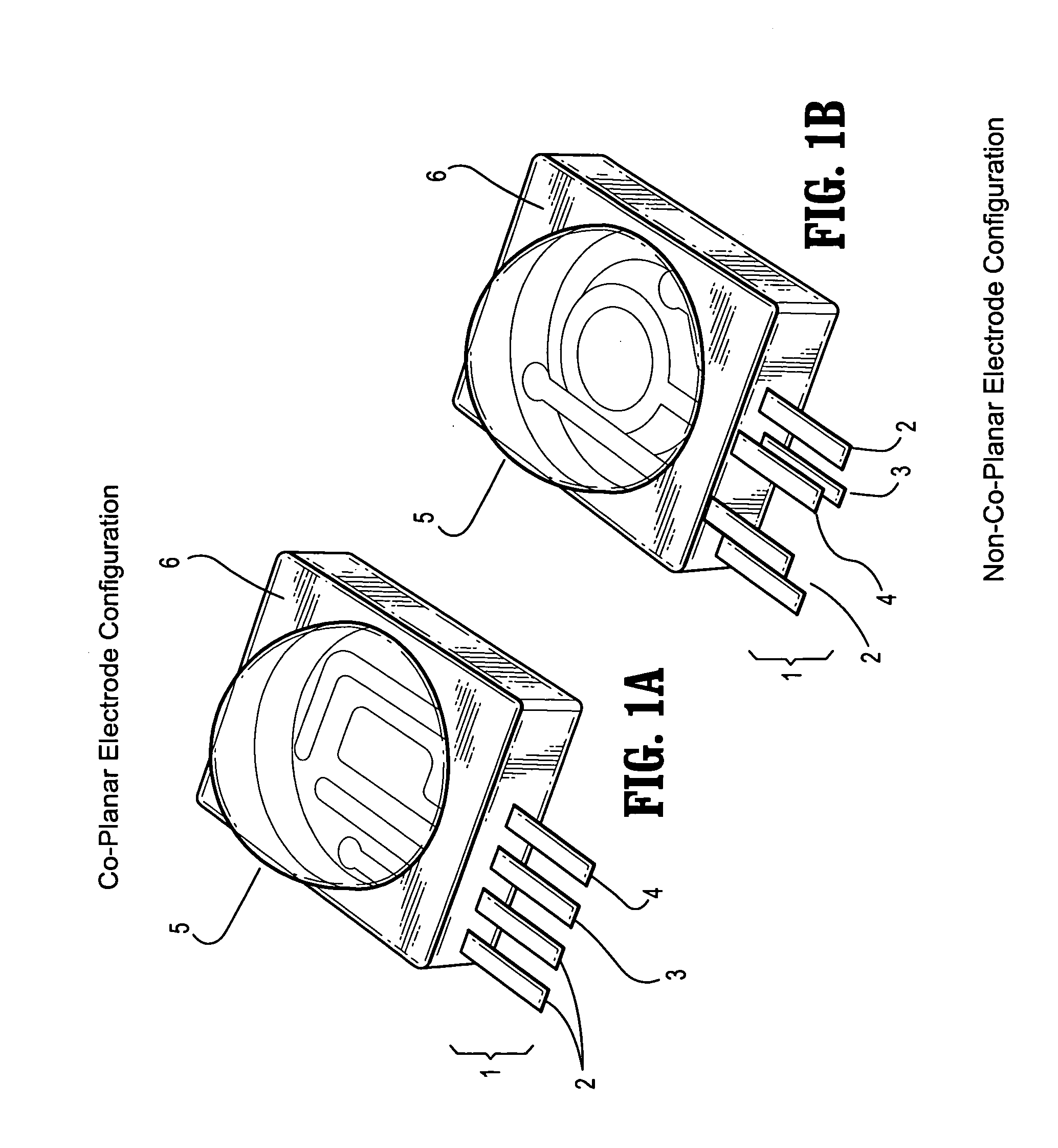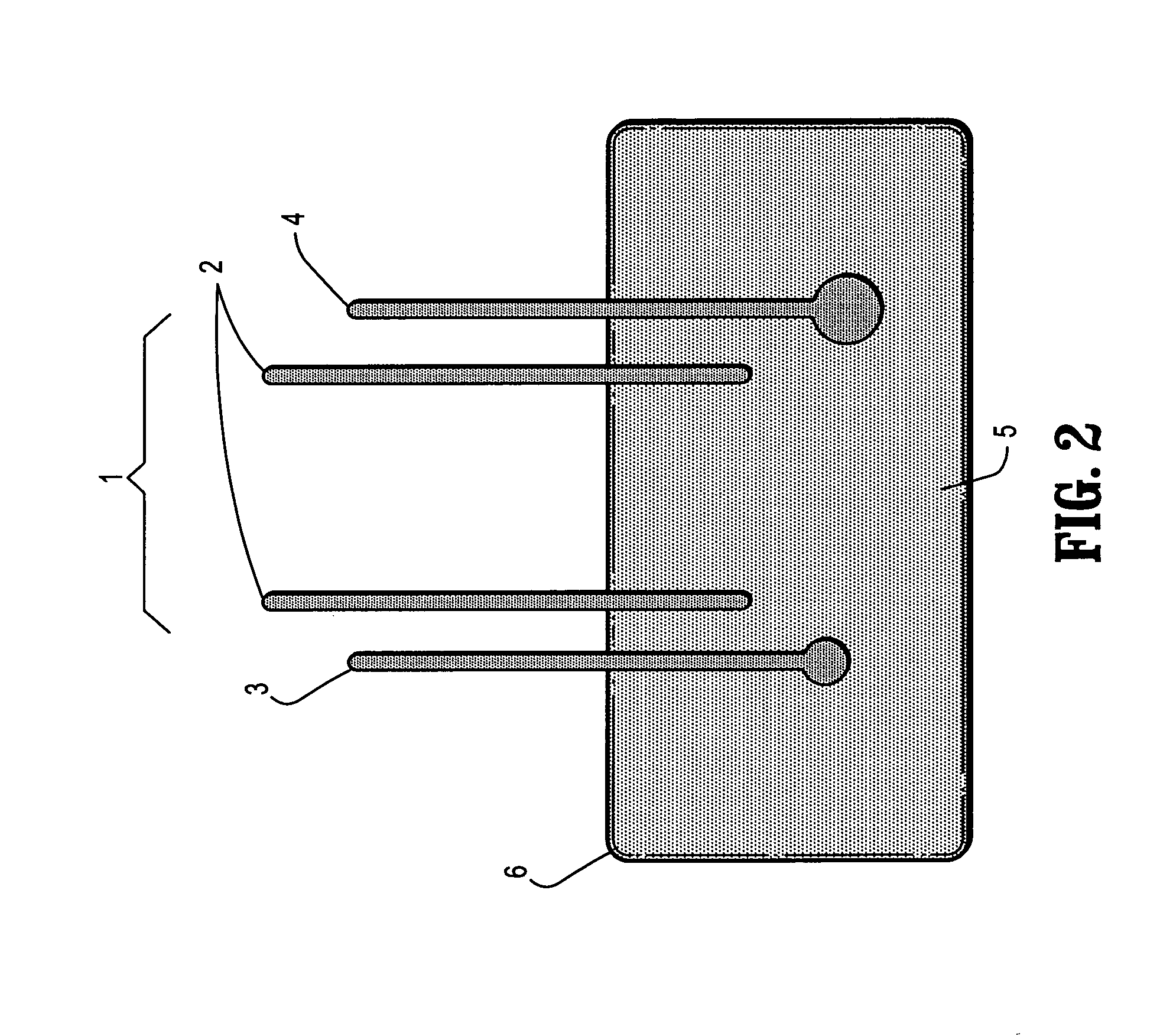Method of analyzing the time-varying electrical response of a stimulated target substance
a target substance and time-varying technology, applied in the field of electrochemical testing systems, can solve the problems of severe protracted test times, difficult to determine the condition and state of charge of the cell, and possible cell rupture, and achieve the effect of determining the hysteresis effect and the determination of the long-term dc biasing
- Summary
- Abstract
- Description
- Claims
- Application Information
AI Technical Summary
Benefits of technology
Problems solved by technology
Method used
Image
Examples
example 1
Enzyme Detection—General
[0070]Enzymes are found within biological systems, where they serve to enable, facilitate or otherwise improve the efficiency of important chemical reactions. Enzymes serve as catalysts for chemical reactions; where they dramatically increase the rate and / or efficiency of the reaction, while in other cases the presence of the enzyme is essential for the reaction to occur at all. For example, an enzyme may cause one of the reactants (note: reactants are conventionally referred to as “substrates”) to assume a particular proper physical shape (confirmation) whereupon it can then (and only then) undergo the desired reaction. Another characteristic of certain enzymes is that they have specific affinities for certain target molecules: when the enzyme encounters its specific target molecule, it immediately binds to it (the subsequent disassociation of the enzyme from the target may often be achieved by a separate reaction); this behavior is useful when it is desired...
example 2
Immunoassays—Overview
[0075]The key components of any immunoassay are the following: 1) an antigen to be tested, 2) the antisera (serum containing antibodies) to this antigen, and 3) some system for detection. The detection system may be integrated into the test protocol.
[0076]Three of the most basic immunoassays include: 1) Competitive Immunoassays, 2) Immunosorbant Assays, and 3) Immunometric Assays. In these assays it is most often the cast that the antibody binds the antigen, which is labeled with some detection system.
[0077]Optical detection systems are commonly employed where monoclonal antibodies, proteins, etc., are attached to a fluorescent dye molecule such as Fluorescein isothiocyanate (FITC), Peridinin chlorophyll protein (PerCP), Allophycocyanin (APC) and others and detected optically.
[0078]In some immunoassays, Horse Radish Peroxidase (HRP) or Alkaline Phosphate (AP) is used for the detection system. Enzymes such as these are typically selected because they exhibit good...
example 3
Electrochemical Sensor Characterization
[0081]Most electrochemical-based biosensors undergo some form of pretest characterization to ensure that the sensor is functioning properly. An analogy in the electronics industry is, prior to final packaging of printed circuit boards (PCB); diagnostic testing is performed to ensure proper operation. Often times an electrical test fixture is developed that rapidly tests all of the operation of the PCB.
[0082]With an electrochemical biosensor, each step leading up to final detection (washing, mixing, hybridization, incubation, etc.) can be monitored using the present apparatus. Most often, these monitoring steps must be noninvasive, in that they should not perturb the system under test.
[0083]The invention may also be used to drive a reaction prior to detection. This would be an invasive technique. For example, cell lysing or denaturation can be accomplished using the invention. Additionally, calibration of the sensor prior to commencing an assay ...
PUM
| Property | Measurement | Unit |
|---|---|---|
| operating voltage | aaaaa | aaaaa |
| open circuit voltage | aaaaa | aaaaa |
| open circuit terminal voltage | aaaaa | aaaaa |
Abstract
Description
Claims
Application Information
 Login to View More
Login to View More - R&D
- Intellectual Property
- Life Sciences
- Materials
- Tech Scout
- Unparalleled Data Quality
- Higher Quality Content
- 60% Fewer Hallucinations
Browse by: Latest US Patents, China's latest patents, Technical Efficacy Thesaurus, Application Domain, Technology Topic, Popular Technical Reports.
© 2025 PatSnap. All rights reserved.Legal|Privacy policy|Modern Slavery Act Transparency Statement|Sitemap|About US| Contact US: help@patsnap.com



